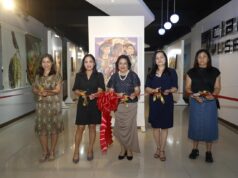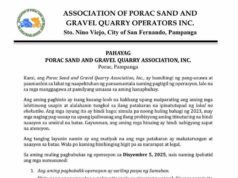SCIENCE CITY OF MUÑOZ – Expect a “gold rush” soon for a Philippine- bred rice variety whose grains are golden and laden with the promise of helping curb Vitamin A defi ciency that causes blindness.
The variety is called “golden rice,” the name given to the plant type that produces yellow-orange grains. It was developed in 2002 by two scientists from Switzerland and Germany.
Beta-carotene gives the rice variety its peculiar color.
In 2004, a team from the Philippine Rice Research Institute (Phil- Rice) here was formed believing that genetic engineering of rice would help address Vitamin A deficiency whose genes are from the improved variety of the original golden rice.
It soon developed a variety that contains the golden rice genes. Currently, the Golden Rice Project is undergoing regulatory review for its application to conduct fi eld trials here and in San Mateo, Isabela.
Similar to orange-colored fruits
Reynante Ordonio, PhilRice Healthier Rice Project, said the nutrient in golden rice is similar to what is found in orange-colored fruits and vegetables.
It is converted, he said, to Vitamin A only as needed by the body. Dr. Antonio Alfonso, former head of PhilRice’s Golden Rice Project, said the beta-carotene content of the grain is richer than other plant sources.
Beta-carotene, he added, becomes Vitamin A only when it is processed by the body. A cup of cooked rice, he said, could supply half of the recommended daily allowance (RDA) of Vitamin A for an adult.
Alfonso also said the first stage of research and development work was the transfer of genes from an improved variety of golden rice to PSB Rc 82 (Peñaranda), a local rice variety that is widely used by farmers.
He said the golden rice strain, which was the source of the transferred genes, was developed in Switzerland from 1991 to 2002 by Prof. Ingo Potrykus, of the Institute for Plant Sciences of the Swiss Federal Institute of Technology in Zurich, and Prof. Peter Beyer, of the Center for Biosciences of the University of Freiburg in Germany. It was a breakthrough as the grain contained building blocks to produce beta- carotene.
He said the development of this plant type was meant to help solve Vitamin A deficiency which causes blindness, especially among children.
Rice was selected as a medium for solving Vitamin A deficiency, he added, because it is the Philippines’ main staple and is cheaper than other types of food with beta carotene. Among the types of food associated with beta-carotene is carrot.
Researches done by PhilRice in developing the golden rice indicated that Vitamin A deficiency causes up to 670,000 deaths among children worldwide.
In the Philippines, it added, 15.2 percent of children between six months and five years are Vitamin A deficient. At least 9.5 percent of pregnant women are Vitamin A deficient and 6.4 percent of lactating mothers also suffer from it.
Allowed by law
The agency’s initiative drew strength from Republic Act No. 8976 (Philippine Food Fortification Act of 2000) that calls for a food fortification program to address malnutrition.
The International Rice Research Institute (IRRI) based in Los Baños, Laguna, received the golden rice grains. IRRI offered these to the Philippines and other countries.
The research of golden rice is funded by the Bill and Melinda Gates Foundation, Rockefeller Foundation and the United States Agency for International Development. IRRI and the Helen Keller International, a nonprofit organization dedicated to preventing blindness and reducing malnutrition worldwide, are PhilRice’s partners in the project.
Initial results of studies here showed that the color of the grains harvested are like the meat of squash, meaning there’s beta carotene in them.
PhilRice said the team has made sure that the project is monitored by the Department of Science and Technology (DOST).
Ordonio said the PhilRice team continuing with the research is definitely working closely with national regulatory agencies to ensure safety.
He added that an important aspect of the review of the study is public consultation.
Dr. Eloisa Karen Barroga, PhilRice deputy executive director, said the golden rice variety would only be made available to farmers and consumers once all the required tests and evaluations were completed. She added that the PhilRice and IRRI would “not push for the adoption of a crop that is not yet available.”
“As a research organization, we are interested to see first its field performance, safety and effectiveness in increasing Vitamin A among humans following regulatory procedures,” Barroga said.





